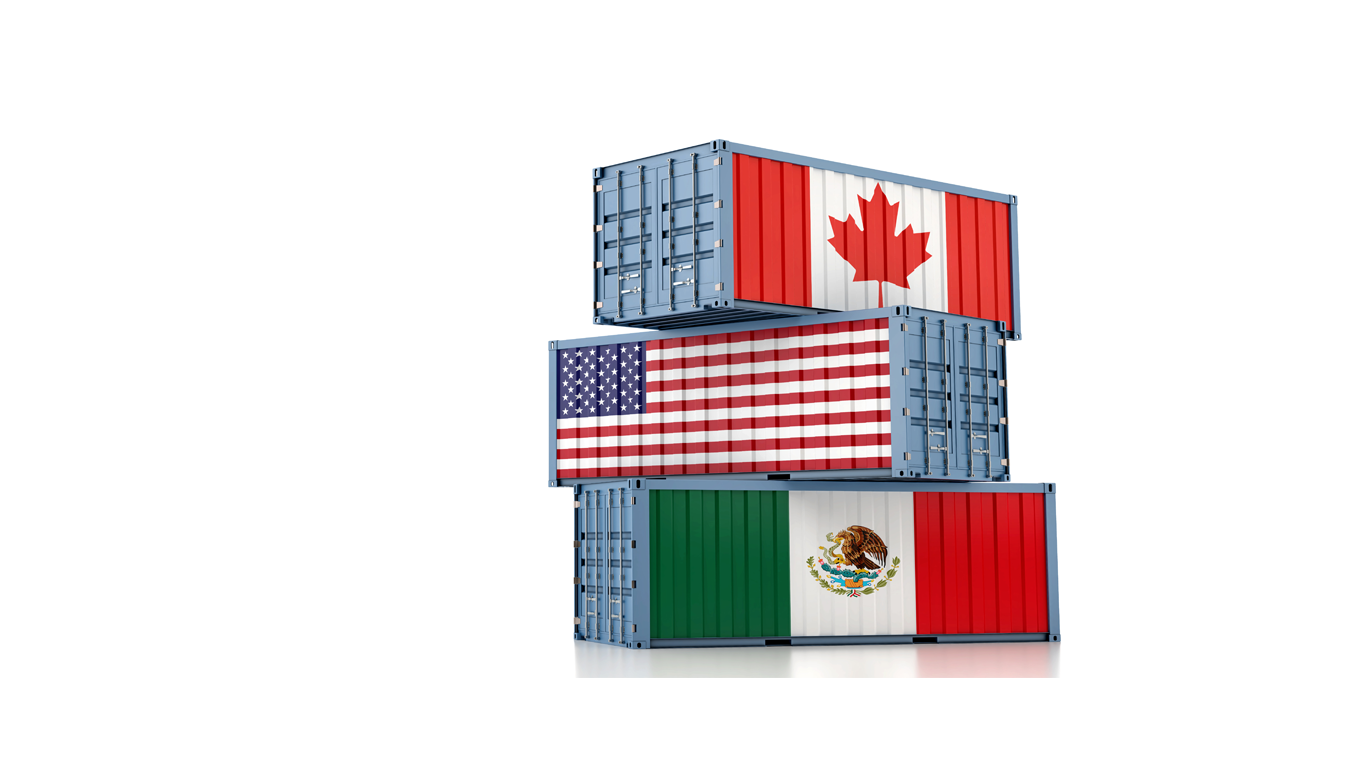USMCA Overview
The United States-Mexico-Canada Agreement (USMCA)
On July 1, 2020, the United States, Mexico, and Canada updated NAFTA to create the new USMCA. The USMCA is mutually beneficial for North American workers, farmers, ranchers, and businesses. It creates a more balanced environment for trade, support high-paying jobs for Americans, and grow the North American economy.
Agreement highlights include:
- Creating a more level playing field for American workers, including improved rules of origin for automobiles, trucks, other products, and disciplines on currency manipulation.
- Benefiting American farmers, ranchers, and agribusinesses by modernizing and strengthening food and agriculture trade in North America.
- Supporting a 21st Century economy through new protections for U.S. intellectual property, and ensuring opportunities for trade in U.S. services.
- New chapters covering Digital Trade, Anticorruption, and Good Regulatory Practices, as well as a chapter devoted to ensuring that Small and Medium Sized Enterprises benefit from the Agreement.
Tariffs
All products that had zero tariffs under NAFTA remain at zero under USMCA. Canada will provide new and expanded access (via Tariff Rate Quotas) for U.S. exports of several dairy categories.
For additional information on tariffs, including USMCA and applied tariffs, visit the FTA Tariff Tool and the FTA Resources Toolbox on our FTA Help Center. To learn more about harmonized system codes, visit our Understanding H.S. Codes page.
Rules of Origin
For goods that are not wholly obtained, you must meet the product’s rule of origin, usually through Tariff Shift or Regional Value Content. Learn more about how to Read and Apply FTA Rules of Origin. The rules of origin may be found in the final text of the FTA. Occasionally, a particular rule of origin may be revised. For the most updated version of the ROOs consult the Harmonized Tariff Schedule of the United States, General Notes — General Note 11.
- Accumulation may allow the producer to reduce the value of the non-originating materials used in the production of the good.
- De Minimis allows the exporter to disregard a very small percentage of non-originating materials the do no meet a tariff shift rule.
- Direct Shipment are goods which must be shipped directly from one FTA party to another FTA party.
- Fungible Goods and Materials refers to goods or materials (components) that are interchangeable for commercial purposes and whose properties are essentially identical.
- Indirect Materials are goods used in the production, testing or inspection of a good but not physically incorporated into the good.
USMCA includes strong rules of origin for industrial products that will increase regional content and help preserve North American manufacturing, including new rules for autos and auto parts, chemicals, steel-intensive products and textiles and textiles. Find more information in the General Notes – General Note 11. These rules will help ensure that only producers who use sufficient amounts of U.S. or North American parts or materials receive preferential tariff benefits.
De Minimis Threshold to Determine Origin of a Good
USMCA increases the de minimis threshold for purposes of origin from 7 percent to 10 percent, with certain exceptions for textile and apparel goods. For more information, see Article 4.12 of the USMCA Rules of Origin Chapter.
To learn more about FTA rules of origin and resources, visit our Identify and Apply Rules of Origin page on the FTA Help Center.
Claiming/Documenting Origin
Once you have determined that your product qualifies for USMCA, you need to declare the product qualifies for preferential tariff treatment.
The USMCA no longer requires a specific certificate of origin. Rather, a minimum set of data elements must be submitted to prove origin. These nine data elements are found in Annex 5-A of Chapter 5 Origin Procedures.
U.S. Customs and Border Protection has updated its suggested USMCA Certification of Origin template. Note, you will need to download the file to your computer and then open the file using “Adobe Acrobat”.
Exports to Canada from the United States
For a shipment exported by mail, the following still applies:
- $20 and under: duty and tax free when imported from any country
- Above $20: duties and taxes apply when imported from any country, including the US and Mexico
Shipments by Express/Courier (do not have to be part of the Courier Low Value Shipment program (CLVS)
- Up to C$40: duty and tax free
- Above C$40 to C$150: duty free, but taxes still apply
- Above C$150: duties and taxes apply
Shipment by couriers participating in the CLVS
Qualified shipments not exceeding $3,300 are eligible for importation by approved participants within the Courier Low Value Shipment (CLVS) Program. Less than CAD $3,300
For more information about CLVS go to Canada Border Services Agency CLVS Program
Exports to Mexico from the United States
- Up to $50: duty and tax free
- Above $50 to $117: duty free, but taxes still apply
- Above $117: duties and taxes apply
Certification is not required for exports to Mexico that do not exceed US $1,000. A Party may require a written representation certifying that the good qualifies as an originating good; Chapter 5 of the USMCA agreement page 4. Record-keeping requirements still need to be met.
Record Keeping Requirements
The records used to establish HS classification, origin and values for your materials need to be maintained generally for 5 years from the date of entry.
Resources
- USMCA Hompe Page
- USMCA RESOURCES
- USMCA Small Business Export Resources
- U.S. Department of Agriculture - USMCA Overview
- OTEXA(Office of Textiles)
- CBP (U.S. Customs and Border Patrol) Resource Page on USMCA
- U.S. Commercial Office in Mexico
- U.S. Commercial Office in Canada
- CBP Side-by-Side Comparison of FTAs
- FTA Help Center
- FTA Tariff Tool
